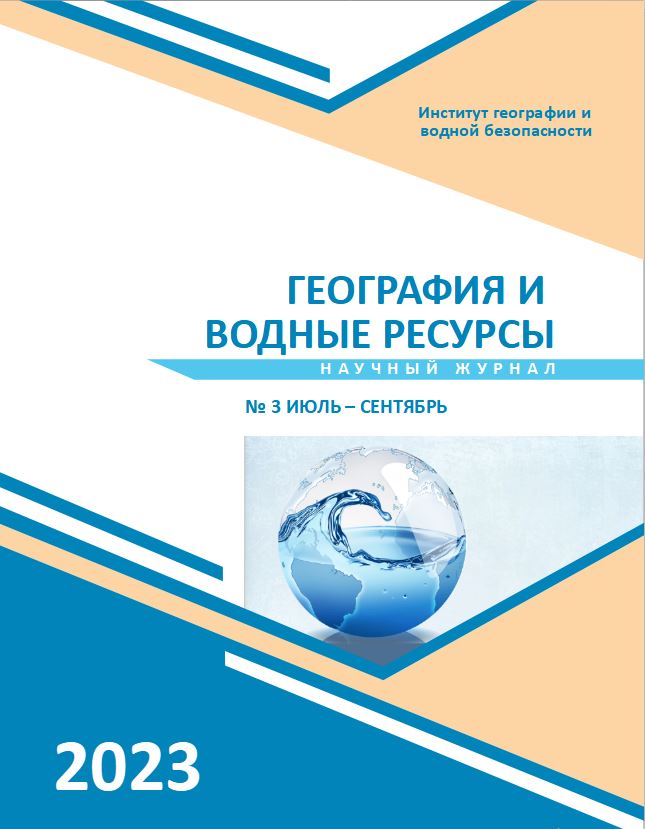The role of reservoirs in the formation of the hydroecological situation of the Сentral Asian region
Main Article Content
Abstract
As you know, the basins of more than 260 of the world's rivers are divided between two or more countries. River basins are home to about 40% of the world's population, occupy approximately half of the land surface, and account for about 60% of the globe's fresh water. Therefore, in modern times, one of the important regional and international problems is the establishment of friendly relations between the countries of transboundary river basins, the rational use of transboundary water resources, the correct distribution of water between countries, the resolution of conflicts in the use of transboundary water resources and other similar issues. The Aral Sea basin has two large transboundary rivers that are used by all countries in the region. Thus, this article examines the role of reservoirs in the regulation of water resources and their effective use in the process of climate change. In particular, this article analyzes the role of the Tajik Sea reservoir in regulating river flow, sedimentation of pollutants in river water and a decrease in the degree of salinity, as well as the impact on the formation of the climate of adjacent areas and use in various industries.
Article Details
References
Исполнительный комитет Международного фонда спасения Арала // https://ecifas-tj.org/
Научно-информационный центр МКВК // http://cawater-info.net/expert-platform/database.htm
Ибатуллин С.Р., Ясинский В.А., Мироненков А.П. Влияние изменения климата на водные ресурсы в Центральной Азии: Отраслевой обзор. – Алматы, 2009. – 44 с.
Гарелина С.А., Давлатшоев С.К., Латышенко К.П., Обиджони Ш.К., Курбонов Н.Б. Повышение безопасности
гидротехнических сооружений. Часть 2. На примере водохранилища Нурекской ГЭС на реке Вахш. – Химки: АГЗ МЧС
России, 2021. – 192 с.
Наврузов С.Т. Управление водными ресурсами трансграничных рек (на примере Центральной Азии): Автореф.
дис. … д. тех. н. – Москва, 2008. – 35 с.
Петров Г.Н. Комплекс прикладных методов и моделей для совершенствования использования водно-энергетических ресурсов трансграничных рек Центральной Азии: Автореф. дис. … д. тех. н. – Москва, 2012. – 30 с.
Абдушукуров Д.А., Азимов Ш.Ш., Джураев А.А., Петухов В.Н. Состояние Кайраккумского водохранилища //
Вестник Таджикского национального университета. Серия естественных наук. – 2016. – Т. 1, № 192. – С. 218-223.
Abdushukurov D.A., Passell H.D., Vandergraaf T.T. Geochemistry of the Kayrakum reservoir on Central Asia’s Syr
Darya. – FRG: Academic Publishing «Lambert», 2014. – P. 1-90.
ЕЭК ООН, РЭЦЦА. Национальный доклад стандарты и нормы качества вод в Республике Узбекистан. – Ташкент; Алматы, 2011. – 80 с.
Николаенко В.А. Классификация вод водохранилищ Средней Азии по химическому составу и их оценка для
ирригации // Водные ресурсы. – 1988. – № 2. – С. 115-121.
Муртазаев У.И. Водохранилища Таджикистана и их влияние на прилегающие ландшафты. – Душанбе: Ирфон,
– 304 с.

